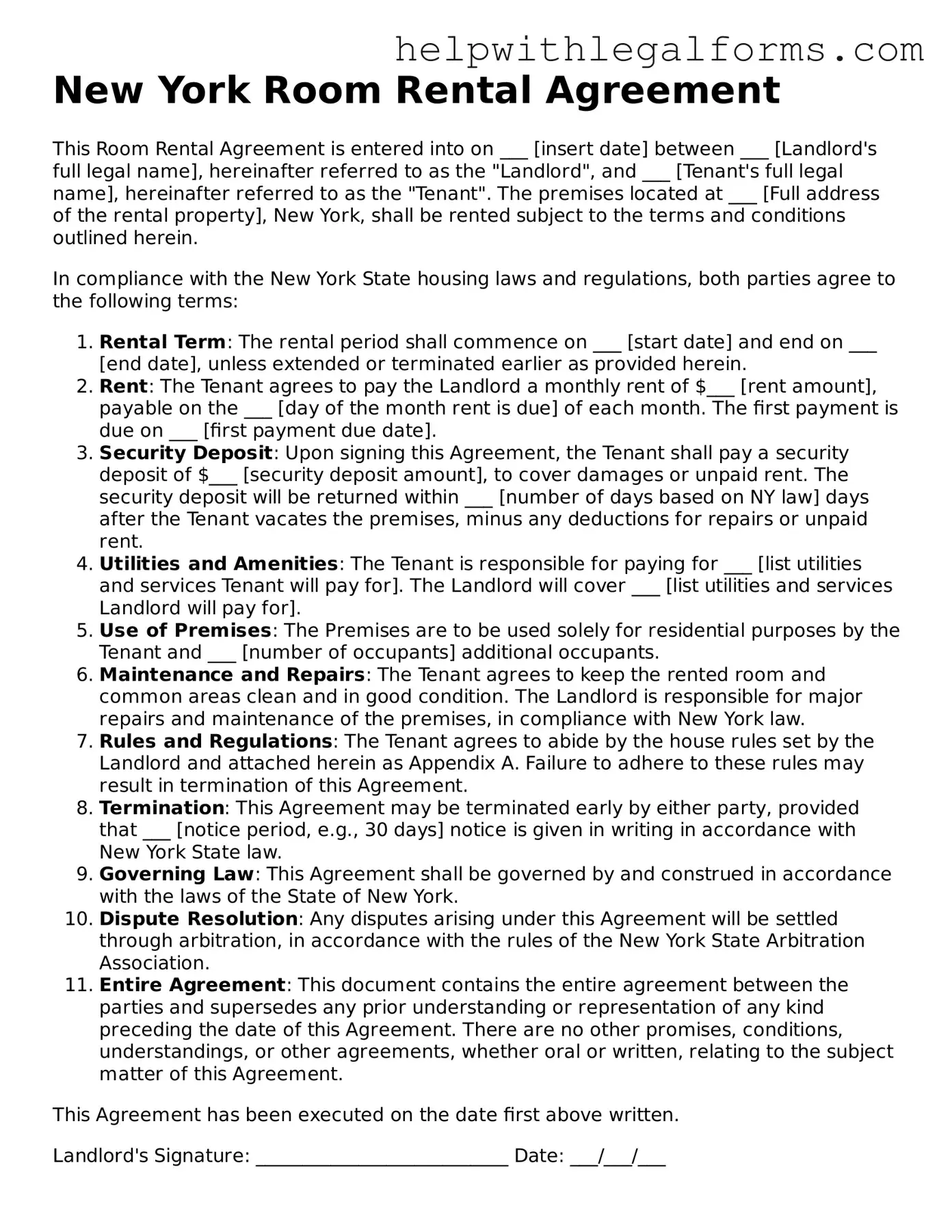New York Room Rental Agreement
This Room Rental Agreement is entered into on ___ [insert date] between ___ [Landlord's full legal name], hereinafter referred to as the "Landlord", and ___ [Tenant's full legal name], hereinafter referred to as the "Tenant". The premises located at ___ [Full address of the rental property], New York, shall be rented subject to the terms and conditions outlined herein.
In compliance with the New York State housing laws and regulations, both parties agree to the following terms:
- Rental Term: The rental period shall commence on ___ [start date] and end on ___ [end date], unless extended or terminated earlier as provided herein.
- Rent: The Tenant agrees to pay the Landlord a monthly rent of $___ [rent amount], payable on the ___ [day of the month rent is due] of each month. The first payment is due on ___ [first payment due date].
- Security Deposit: Upon signing this Agreement, the Tenant shall pay a security deposit of $___ [security deposit amount], to cover damages or unpaid rent. The security deposit will be returned within ___ [number of days based on NY law] days after the Tenant vacates the premises, minus any deductions for repairs or unpaid rent.
- Utilities and Amenities: The Tenant is responsible for paying for ___ [list utilities and services Tenant will pay for]. The Landlord will cover ___ [list utilities and services Landlord will pay for].
- Use of Premises: The Premises are to be used solely for residential purposes by the Tenant and ___ [number of occupants] additional occupants.
- Maintenance and Repairs: The Tenant agrees to keep the rented room and common areas clean and in good condition. The Landlord is responsible for major repairs and maintenance of the premises, in compliance with New York law.
- Rules and Regulations: The Tenant agrees to abide by the house rules set by the Landlord and attached herein as Appendix A. Failure to adhere to these rules may result in termination of this Agreement.
- Termination: This Agreement may be terminated early by either party, provided that ___ [notice period, e.g., 30 days] notice is given in writing in accordance with New York State law.
- Governing Law: This Agreement shall be governed by and construed in accordance with the laws of the State of New York.
- Dispute Resolution: Any disputes arising under this Agreement will be settled through arbitration, in accordance with the rules of the New York State Arbitration Association.
- Entire Agreement: This document contains the entire agreement between the parties and supersedes any prior understanding or representation of any kind preceding the date of this Agreement. There are no other promises, conditions, understandings, or other agreements, whether oral or written, relating to the subject matter of this Agreement.
This Agreement has been executed on the date first above written.
Landlord's Signature: ___________________________ Date: ___/___/___
Tenant's Signature: ___________________________ Date: ___/___/___
Appendix A - House Rules
[Landlord to insert specific house rules here. Common rules include noise restrictions, guest policies, and cleaning responsibilities.]
